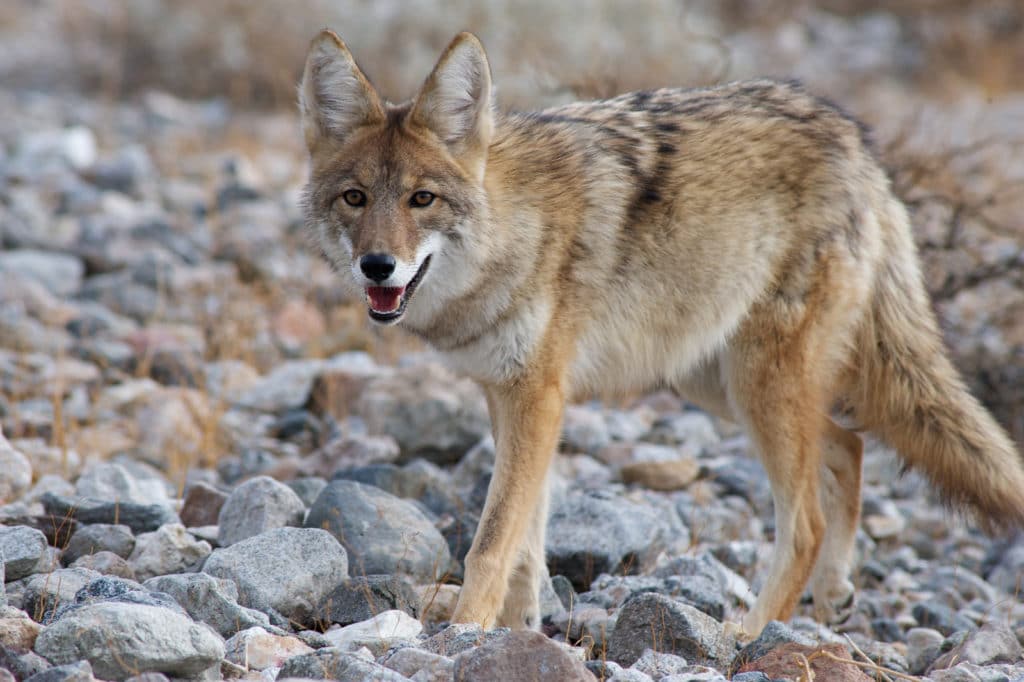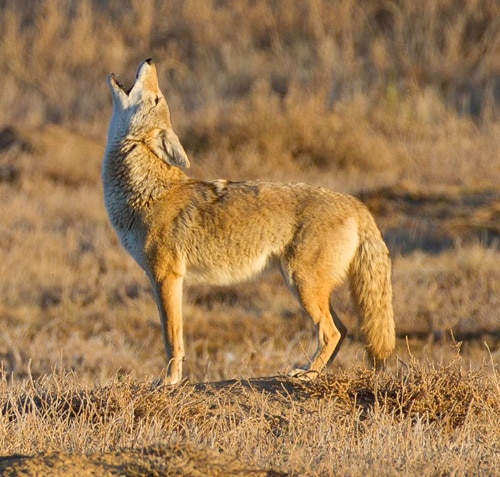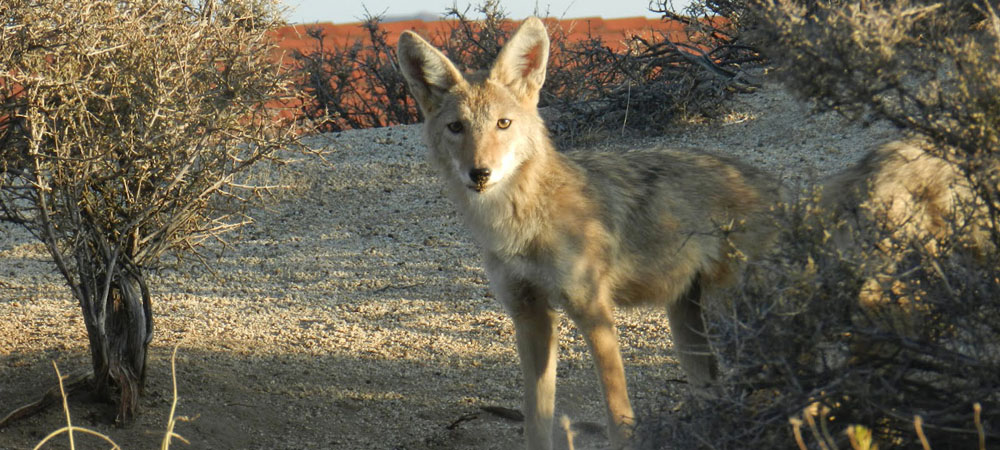A common theme throughout the lore and history of the Old West is the distinct howl of the coyote. No Western movie or book is complete without these resilient little guys as they encompass every Western state in the U.S. as well as Canada and Mexico. Coyotes are canines, and are smaller than wolves but bigger than dogs.
They are a very common occurrence here at Stagecoach Trails Guest Ranch as we frequently hear and see them almost nightly. Throughout the years it has been fascinating to learn about coyote behavior and habits. We usually see them in the horse pasture at sunset and sunrise sifting around the field. They are often fairly close to the fence line in order to have a quick getaway from our Burros. The Burros also known as donkeys will often chase a coyote away as they have a tendency to do so. In recent years they have gotten a little bit lazy and sometimes just watch them instead of chasing them. We also tend to hear them right after it gets dark, usually in the washes right outside the ranch back gate.
Coyotes in the Wild West
There is nothing more Western than sitting by the campfire after the day is done having a good chat with our guests when a pack of coyotes start howling away just beyond our courtyard. It’s often a very intimate and memorable moment for our guests to experience. Sometimes we’ll even give a ‘yip’ back at them, to which they will often respond. Finally, when everyone has gone to bed for the night, it’s not uncommon for the coyotes to emerge from the desert hills and start roaming around the ranch while we sleep. They come into the courtyard and drink from our water fountain, and will roam up and down our main “street”. How would we know this you may ask? Well, the fresh tracks and scat in the morning tend to be a pretty good sign. We also have our little speakeasies on every guest room door for our late night sleepers to be able to peer out of and get a glimpse of these curious animals. The coyote behavior is truly amazing!

Coyote Eating Habbits
Generally, coyotes are carnivorous predators, meaning they will actually hunt their prey. Their diet usually consists of rabbit, rodents, reptiles and even occasionally deer if they can. They will also scavenge on prey that have succumbed to the elements or been taken down by something bigger. They will also occasionally eat plant life, althout this coyote behavior is rare. The howl of a coyote is quite different from that of a wolf. A wolf has a longer, more pronounced howl that lingers for a while; coyotes have more short burst of howls and often make a yipping sound. They can actually sound quite eerie when they’re on the hunt, sounding more like a human screaming or laughing hysterically. This has created a lot of Native American folklore about them. In Navajo mythology, coyotes are seen as tricksters and trouble-makers.

We will also see them while riding the horses. This creates a great atmosphere as they are very curious and will stand atop of a hill watching you as you pass by. Fortunately, coyotes pose no threat to humans or horses as they are just too small to do anything. They will certainly watch you however, and it is a very unique experience to look into their eyes, because out here you can actually get that close to them. Camping in the mountains at night is also a great way to experience these animals. Yoou will almost always hear them either at night or in the early morning, just as a gentle reminder that out there, you are in their territory. These tricksters add to the ambiance of the ranch and act as a shining example of our unique location right in the middle of nature and wilderness.

